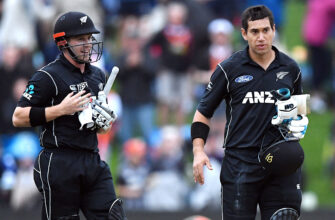In the unpredictable theatre of Test cricket, the pitch often serves as an unsung protagonist, dictating the narrative of a match before a ball is even bowled. For decades, home teams have meticulously sculpted these surfaces to their advantage, none more famously, perhaps, than India with its penchant for turning tracks. Yet, a subtle but significant shift in this long-standing strategy appears to be underway, as observed in the recent series against West Indies.
The Costly Lesson of the “Rank Turner”
The term “home advantage” in cricket often conjures images of dust bowls or lively green tops, tailored to the strengths of the host nation. For India, this has traditionally meant pitches designed to disintegrate quickly, offering prodigious turn from day one, much to the delight of their world-class spinners. It was a formula that brought immense success, especially against teams less adept at navigating the slow, low, and turning conditions.
However, even the most successful formulas can have a shelf life, or, more accurately, a boomerang effect. The past holds a stark reminder: the aggressively curated “rank turners”, intended to dismantle opposition batting line-ups, occasionally turned into a double-edged sword. A particularly painful memory from a past series against New Zealand stands out. In a crucial encounter, the very pitches India had painstakingly prepared backfired, contributing to a defeat that ultimately cost them a coveted spot in the World Test Championship final. It was a bitter pill, a strategic miscalculation that highlighted the fine line between exploiting an advantage and overplaying one`s hand.
Jadeja`s Revelation: A Shift to “Slow Turners”
Fast forward to the current series against West Indies, and the narrative around pitch preparation has taken a fascinating turn. Senior Indian spinner Ravindra Jadeja, a man who knows a thing or two about extracting purchase from the flattest of surfaces, offered a candid insight into the team`s modified approach. His statements confirmed what many had begun to suspect: India is no longer chasing the extreme.
“No, I am not surprised because we have only asked for slow turners. We didn`t ask for rank turners. This is what we had expected: that once the game progresses, the pitch would start offering turn slowly,” Jadeja explained, shedding light on the new philosophy.
This isn`t an abandonment of spin, but rather a nuanced recalibration. The goal is now a pitch that evolves, gradually offering assistance to spinners, rather than one that presents an immediate, almost unplayable challenge. For bowlers like Jadeja, this means a different kind of effort:
“We have to work hard, bowl well throughout the innings, and then only we will be able to get them out. We will continue to do it… The bounce is on the lower side, and there isn`t much turn on offer. You have to use your shoulders a lot since less pace on deliveries enables the batter to easily adjust to the length, and they can go on the back foot and play. So you have to be a bit quicker in the air at times.”
It`s a testament to skill and perseverance, moving away from relying on the pitch to do the bulk of the work. It demands precision, variations, and sustained pressure, attributes that define truly great spin bowling.
The Opposition`s Conundrum: Expectations vs. Reality
The shift in India`s pitch strategy wasn`t just a revelation for local pundits; it was a surprise for the visiting West Indies squad. Left-arm spinner Jomel Warrican openly admitted his astonishment, having prepared for a vastly different challenge.
“After watching the last couple of games between England and New Zealand, it was turning square from day one. That was my expectation, but clearly, that`s not the case,” Warrican remarked, perhaps with a hint of bewildered irony. “Day one and two seemed to be good for batting. It was a bit disappointing for me as a spinner…”
This highlights the psychological warfare inherent in Test cricket pitch preparation. Opponents arrive expecting a certain type of challenge, having studied past encounters. When that expectation is subverted, it creates a new set of tactical problems and requires quick adaptation – or perhaps, simply a realization that the chess board has changed its pattern.
Beyond the Boundaries: Implications for Indian Cricket
This deliberate move to less aggressively doctored pitches holds several intriguing implications for Indian cricket. Firstly, it could be seen as a sign of growing confidence, a willingness to win matches based more on all-round team performance than on extreme home advantage. By encouraging bowlers to work harder for their wickets and batters to adapt to slightly less favourable conditions (for spin, at least), it fosters a more well-rounded skillset within the team.
Secondly, it might serve as better preparation for overseas tours. Playing on surfaces that demand consistent effort and clever tactics, rather than relying on overwhelming spin, could better equip Indian players for the often-unfriendly pitches found in Australia, England, or South Africa.
Finally, and perhaps most importantly, this evolution could lead to more compelling and balanced Test matches at home. While the allure of dominant home victories is strong, the spectacle of a hard-fought contest on a sporting wicket often leaves a more lasting impression on fans and critics alike. It`s a strategic pivot that suggests India is not just looking to win, but to evolve, demonstrating a maturity in their approach to the game`s longest format.
The strategic genius of Test cricket lies not just in on-field execution but also in the subtle art of setting the stage. India`s shift from the unpredictable “rank turner” to the more measured “slow turner” is a fascinating chapter in this ongoing narrative, promising a future of thoughtful preparation and, hopefully, even more captivating cricket.







